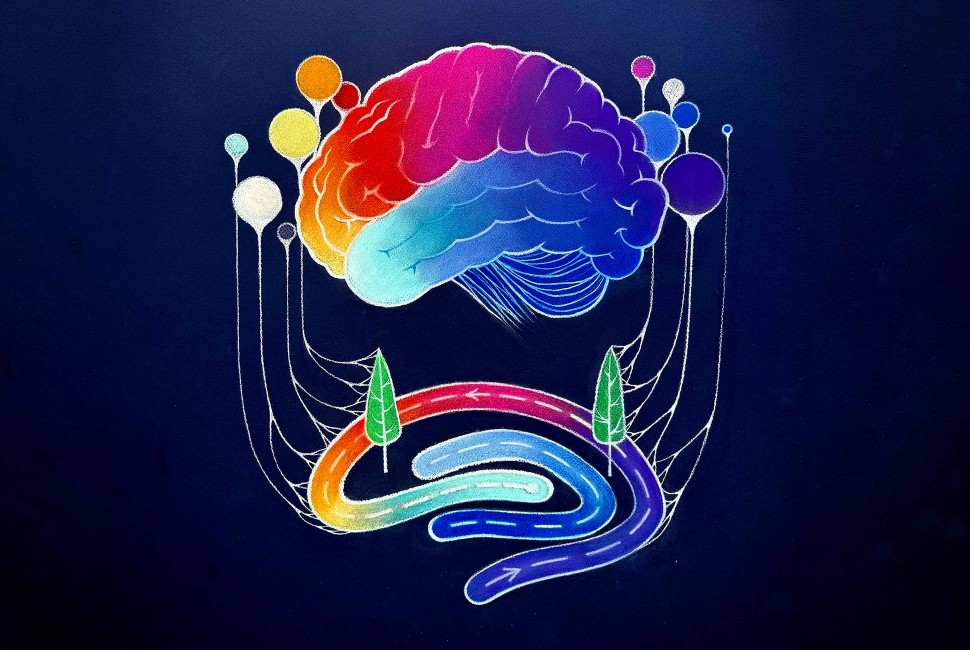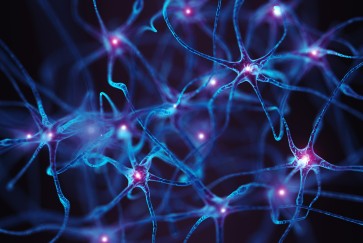The brain’s internal GPS changes each time we navigate a familiar, static environment, Northwestern University neurobiologists found in a study published in Nature.
This means that if someone walks the same path every day — and the path and surrounding conditions remain identical — each walk still activates different “map-making” brain cells, or neurons.
Not only does this discovery shed light on the fundamental mystery of how the brain processes and stores spatial memories, but it also could have profound implications for scientists’ understanding of memory, learning and even aging.
“Our study confirms that spatial memories in the brain aren’t stable and fixed,” said Northwestern’s Daniel Dombeck, the study’s senior author. “You can’t point to one group of neurons in the brain and say: ‘That memory is stored right there.’ Instead, we’re finding that memories are passed among neurons. The exact same experience will involve different neurons every time. It’s not a sudden change, but it slowly evolves.”
Dombeck is a professor of neurobiology and the Wender-Lewis Teaching and Research Professor at Northwestern’s Weinberg College of Arts and Sciences. The study was a collaboration among Dombeck and three members of his laboratory: Jason Climer, Heydar Davoudi and Jun Young Oh. Climer, who is one of the study’s co-first authors, is now an assistant professor of molecular and integrated physiology at the University of Illinois, Urbana-Champaign.
A memory mystery
Located deep within the brain’s temporal lobe, the hippocampus stores memories related to spatial navigation. For decades, neurobiologists thought the same hippocampal neurons encoded memories of the same places. In other words, the path someone might take from their bedroom to their kitchen should activate the exact same sequence of neurons during each midnight walk for a glass of water.
About 10 years ago, however, scientists imaged mice’s brains as they ran through a maze. Even as the mice ran through the same maze day after day, different neurons fired during each run. Scientists wondered if the results were a fluke.
“People in the field started to wonder if the mice were truly having the same experience during each run through the maze,” Dombeck said. “Maybe they run faster on some days. Maybe the smells change from day to day. Maybe there are subtle, unavoidable environmental or behavioral differences that change the overall experience.”
‘We controlled for everything we possibly could’
To probe these questions, Dombeck and his team designed an experiment that gave them unprecedented control over the mice’s sensory input. First, the team employed a cutting-edge multisensory virtual reality system — previously developed in Dombeck’s laboratory — to guarantee the animals’ experienced identical visual cues. Then, the mice ran through the virtual maze on treadmills, ensuring precise measurement of speed. Finally, the scientists put cones on the mice’s noses to provide identical smells for every session.
After running the experiment several times, the results were clear. Even in a highly reproducible virtual world, the encoded neurons still drifted. The finding confirmed that the brain’s spatial maps are inherently dynamic, constantly updating regardless of how static a space might be.
“We controlled for everything we possibly could,” Dombeck said. “I was convinced we were going to get the opposite result and show that memories really are identical for the same space. But it turns out, they are not. A slightly different group of neurons activated each time.”
“This evidence suggests that memories are fluid. This could be related to deeper questions of why the brain can do things modern AI struggles with, things like learning new things continuously,” Climer said. “It also may play a role in natural forgetting — an active process, often overlooked, but essential for healthy memory function.”
Implications for aging
Although few patterns arose throughout the course of the experiment, Dombeck and his team did notice one consistent factor. The most excitable neurons, which were more easily activated, maintained more stable spatial memories throughout multiple runs through the virtual maze. Because neuron excitability decreases with age, the finding could help scientists understand the role of aging as it relates to the brain’s ability to encode new memories.
“Some neurons do seem to be better at holding onto the original memory than others,” Dombeck said. “Really excitable neurons seem to store memories the best. The ones that fire more weakly are the ones that end up changing. So there does seem to be some small component of the original memory that’s still there in this small fraction of neurons.”
Dombeck and his team are still pondering why the activated neurons change even though the space remains exactly the same. Although he’s still unsure, Dombeck said the reason might be related to time.
“Even if you have the exact same experience, it has to be occurring at a different time,” Dombeck said. “If I hike the same path twice, and it’s identical both times, I probably still want to remember that I did the same hike twice. It’s possible that the brain forces us to take very similar experiences that occur at different times and remember them in slightly different ways. That gives us access to memories of those individual experiences.”
Notes
The study was supported by the National Institutes of Health.


